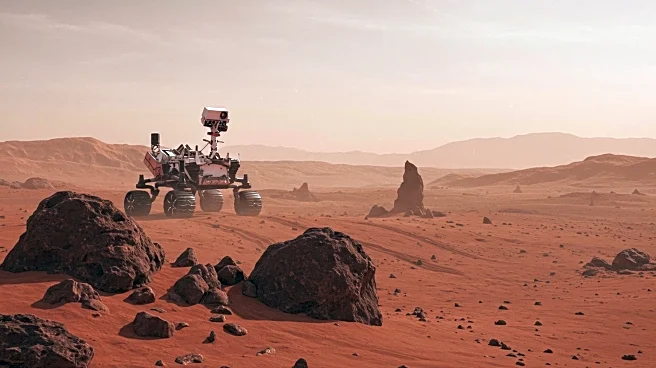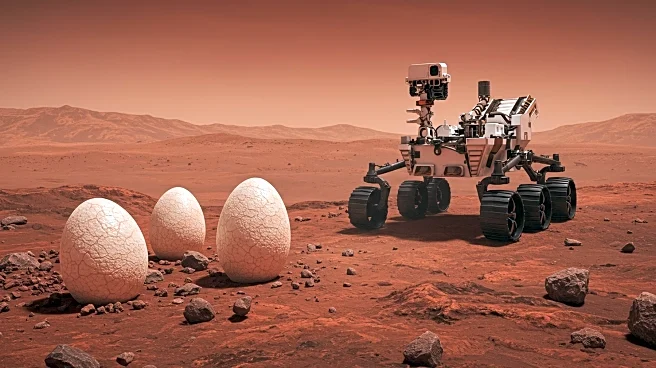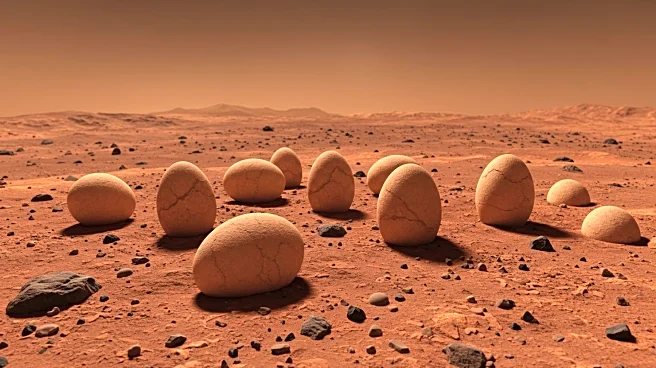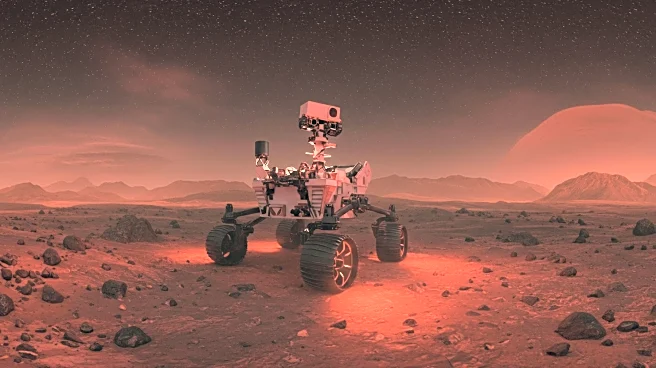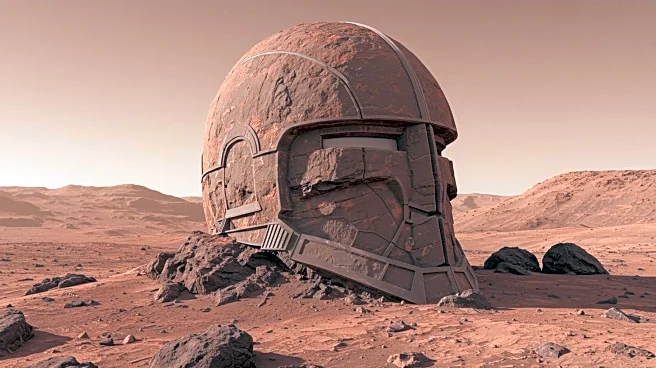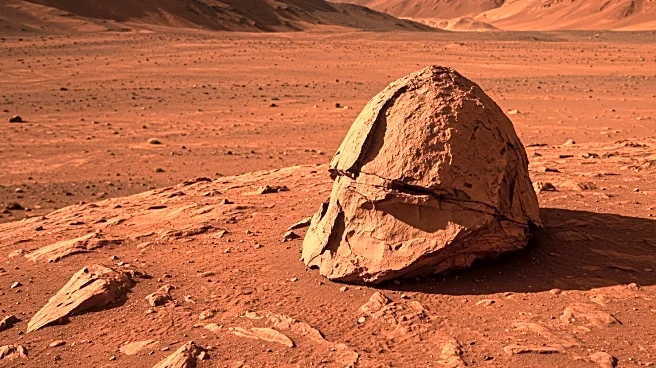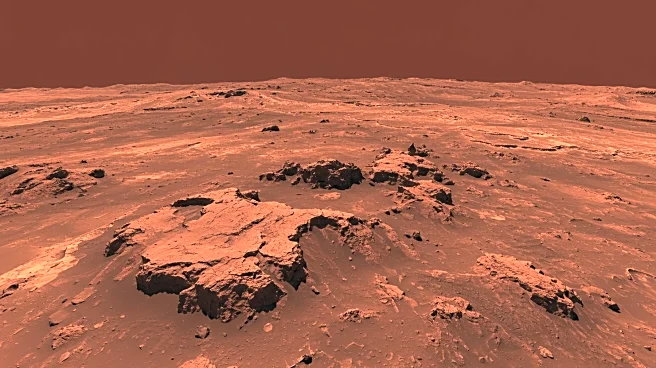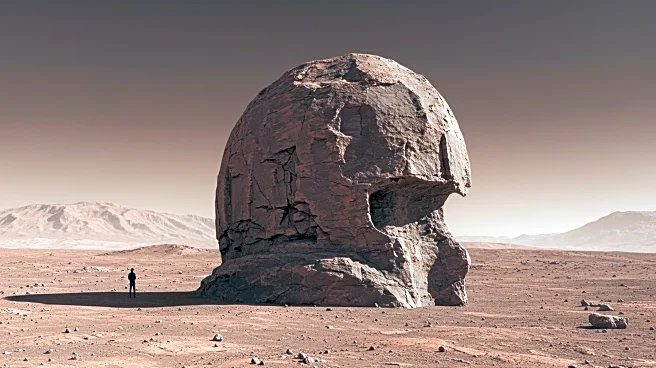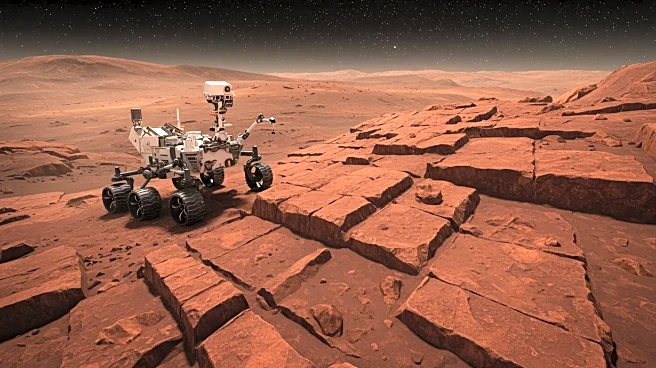What's Happening?
NASA's Curiosity Rover has made a significant discovery on Mars, capturing images of unusual rock formations in an area known as The Boxworks. These formations, resembling clusters of fossilized eggs or dinosaur nests, have intrigued scientists due to their unique appearance. The Boxworks is located on the Gediz Vallis Ridge on Mount Sharp, a region known for its complex geological history. The rocks in this area are filled with fractures and veins, suggesting past fluid movement, which could provide insights into Mars' ancient climate and the presence of water. Curiosity's team has been meticulously planning its navigation to this site to study the weathering patterns and sedimentary layers, which could reveal how water once flowed through Mars' crust.
Why It's Important?
The discovery of these rock formations is crucial for understanding Mars' geological history and the planet's potential to have supported life. The formations may hold clues about the environmental conditions that existed when Mars was a wetter planet. By studying the mineral composition and structure of these rocks, scientists hope to learn more about the planet's transition from a potentially habitable environment to its current arid state. This research could also inform future missions aimed at finding signs of past life on Mars, making it a significant step in the ongoing exploration of the Red Planet.
What's Next?
Curiosity will continue to explore the Gediz Vallis Ridge, focusing on areas with promising geological features. The rover's team plans to conduct further imaging and chemical analysis to better understand the mineralogical diversity of the rocks. This ongoing research will help build a more comprehensive picture of Mars' climatic evolution and its implications for habitability. The findings could also guide future missions, including those that aim to return samples to Earth for detailed analysis.
Beyond the Headlines
The discovery highlights the importance of robotic exploration in uncovering the mysteries of Mars. The unique rock formations not only provide scientific insights but also capture public imagination, emphasizing the role of space exploration in expanding our understanding of the universe. The study of these formations could also contribute to the broader field of planetary science, offering parallels to similar geological processes on Earth.
